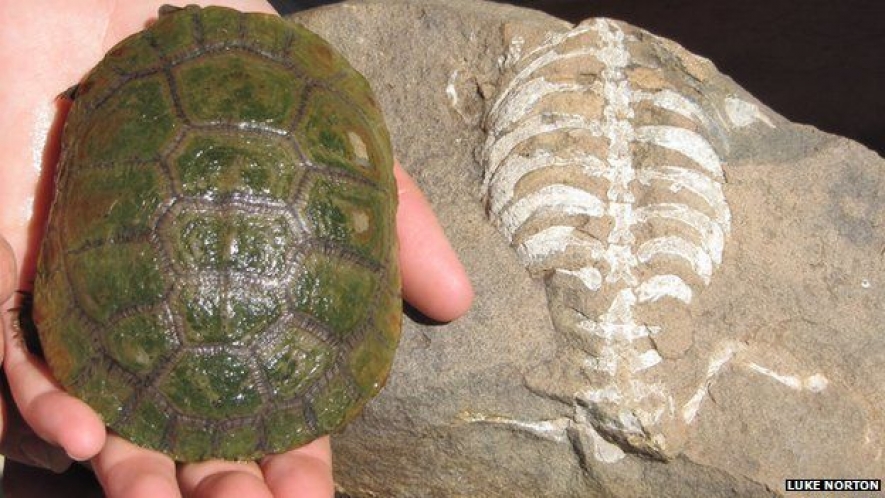Some 240 million years ago, this early turtle-like creature lived in a large lake, in a fairly warm, subtropical climate. But it didn't have the kind of shell modern turtles have, says Hans-Dieter Sues, a curator at the Smithsonian's National Museum of Natural History in Washington, D.C.
Sues describes this primitive turtle, which the scientists named Pappochelys, as being about 8 inches long (20 cm), with slender legs, a long tail and neck, and then "a strange, boxy trunk region."
What's more, the fossil has two openings in the skull behind the eye sockets. That's important because it suggests that turtles are closely related to the reptile lineage that gave rise to lizards and snakes. Researchers had previously thought that turtles evolved from a different group of primitive reptiles that are now extinct.
Biologists have long wondered how turtles came to have their shells. While other animals have developed bony plates of various kinds, Sues says, to be "completely enclosed basically, in its own little bony house,is something that's unique to turtles."
Biologists have long wondered how turtles came to have their shells. While other animals have developed bony plates of various kinds, Sues says, to be "completely enclosed basically, in its own little bony house,is something that's unique to turtles."
The first turtle with a fully developed shell, a creature that would be clearly recognizable to almost everyone as a turtle, shows up in the fossil record about 214 million years ago.
The new fossil, described Wednesday by Sues and his colleague Rainer Schoch in the journal Nature, was uncovered in a limestone quarry near Stuttgart, Germany. Sues says when he saw the strange-looking ribs, he knew immediately that it must be an early turtle.
Sues says in 2008, researchers in China reported finding fossils of a turtle-like creature with broad, expanded ribs in rock beds that are about 220 million years old. A similar creature had been previously described in rocks that are 260 million years old, in what's now South Africa.



















